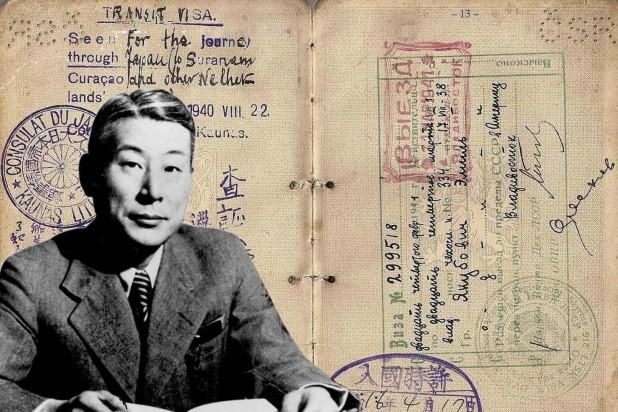The origin of the "Curacao visa" in Kaunas
I mentioned that there are a lot of sources on the Zwatendijk and Sugihara rescue operation in Kaunas. I still have not taken a full inventory, but I have had the chance to closely read the historiographical account of Jonathan Goldstein, "Motivation in Holocaust Rescue: The Case of Jan Zwartendijk in Lithuania, 1940" (published in Lessons and Legacies VI: New Currents in Holocaust Research (Northwestern University Press, 2004)
Goldstein's account and analysis of the case adds significant information about the origin of the Curaçao visa, but is silent on the subject of an earlier similar use of Curaçao visas in Toulouse. Because Goldstein mentions other ensuing cases of Curaçao visas in Sweden and China that he says were inspired by the circumstances in Kaunas, it is clear he does not know that there was an even earlier instance of their use in Toulouse.
Here is a summary of Goldstein's account.
By the early months of 1940, thousands of Jewish refugees fleeing the Nazis to the west and the Soviets to the east were accumulating in unoccupied Lithuania. In May, after the German occupation of the Netherlands, the Dutch government in exile in England, appointed L.P.J. de Decker as its representative to the Baltic states, based in Riga.
Early in June, de Decker dismisses the previous Dutch consul in Kovno, a Lithuanian he suspected of Nazi sympathies. He appoints Jan Zwartendijk, the local Philips representative, as honorary consul. On June 15, the Soviet Union annexes unoccupied Lithuania, including Kovno, where all foreign embassies and consulates are preparing to close.
Sometime before July 11, de Decker receives a letter from Pessla Lewin requesting authorization for her family to immigrate to the Dutch West Indies. She has already learned that no immigration visa is required but that to actually land there requires a permit from the local governor.
Wanting to be helpful, de Decker inscribed this French-language note in her passport: "For the admission of aliens to Surinam, Curaçao, and other Dutch possessions in the Americas, an entry visa is not required." Not a visa, but a half-true statement of fact. The part about the landing permit is not mentioned.
Eleven days later, the son of Pessia Lewin approaches Zwartendijk in Kovno. He shows her de Decker's inscription in his mother's passport and asks for the same in his own. Zwartendijk copies the same note for Nathan Lewin.
Next, the Lewin family go to the Japanese consulate in Kovno, where they are issued transit visas to travel through Japan on the way to Curaçao. The Japanese official is Chiune Sugihara. With the Japanese visa, they get permission from Soviet authorities to travel across Russia and Siberia by train.
So far, this is the Lewin family only. But shortly after, Zwartendijk is approached again, this time by a true Dutch citizen, Nathan Gutwirth, who inquires whether a group of his friends, non citizens, could accompany him to Curaçao. Zwartendijk replies that he can write that same helpful notation.
Next Gutwirth tells his friend Zorach Warhaftig, later an Israeli cabinet minister. Warhaftig confirms that Zwartendijk will now issue these "Curaçao visas" to anyone who asked, and that Sugihara would honor them for Japanese transit.
Beginning on July 24 and until August 3, when the Soviets closed his office, Zwartendijk issues a total of 2345 Curaçao visas. Of those, about 2200 individuals reached Japan, half of whom were able to move on to Western destinations and the other half spent the war interned in Shanghai. None went to Curaçao.
Decades later, Warhaftig met the new Dutch ambassador to Israel and discovered that he had been the governor of Curaçao and Suriname during the war. Warhaftig asked him what he would have done if a ship had arrived in Willemstad with hundreds of Jewish refugees aboard.
Without hesitation he replied that he would have forced the ship back out to sea, as the Americans had done in the case of the St. Louis. I'll pause there and come back with the aftermath of the Zwartendijk story, and then what it means for our Toulouse hypothesis.

